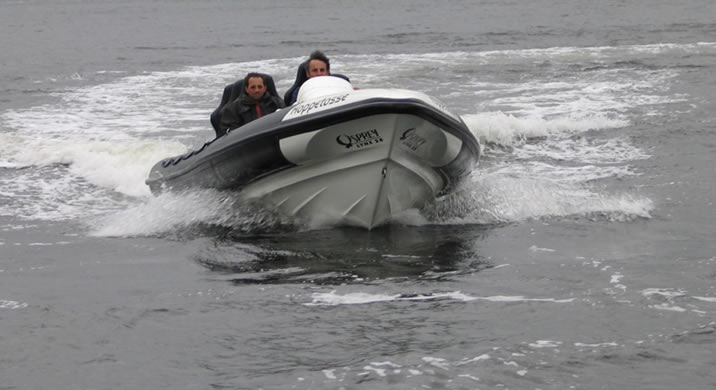Campaign Hoppetosse
An event for handicapped and critically ill children

Rubber dinghy
In recent years, the rubber dingy has managed to change its image completely. A rigid hull construction is now used in 80% of all rubber boats, only the small paddling boats still are designed to fulfil the main demand made of them, i.e. that they can be folded to fit into the boot of a car. However, boats with rigid hulls are by no means inferior to motorboats as far as performance is concerned.
Compared to traditional boats, the rubber dingy offers an array of important advantages: it is safer, lighter, more practical and more cost-effective.
High level of stability:
The large bearing body and the low centre of gravity produce a level of stability which, under normal circumstances, makes it almost impossible for the boat to capsize. This characteristic, crucial for safe and reliable sailing performance, is greatly appreciated – particularly by divers and people who engage in sport fishing.
A rubber dinghy's bearing body is subdivided into a number of independent chambers separated by conical bulkhead walls The large air reserves ensure that the boat remains stable even when one of the air chambers is damaged.
|
 |

